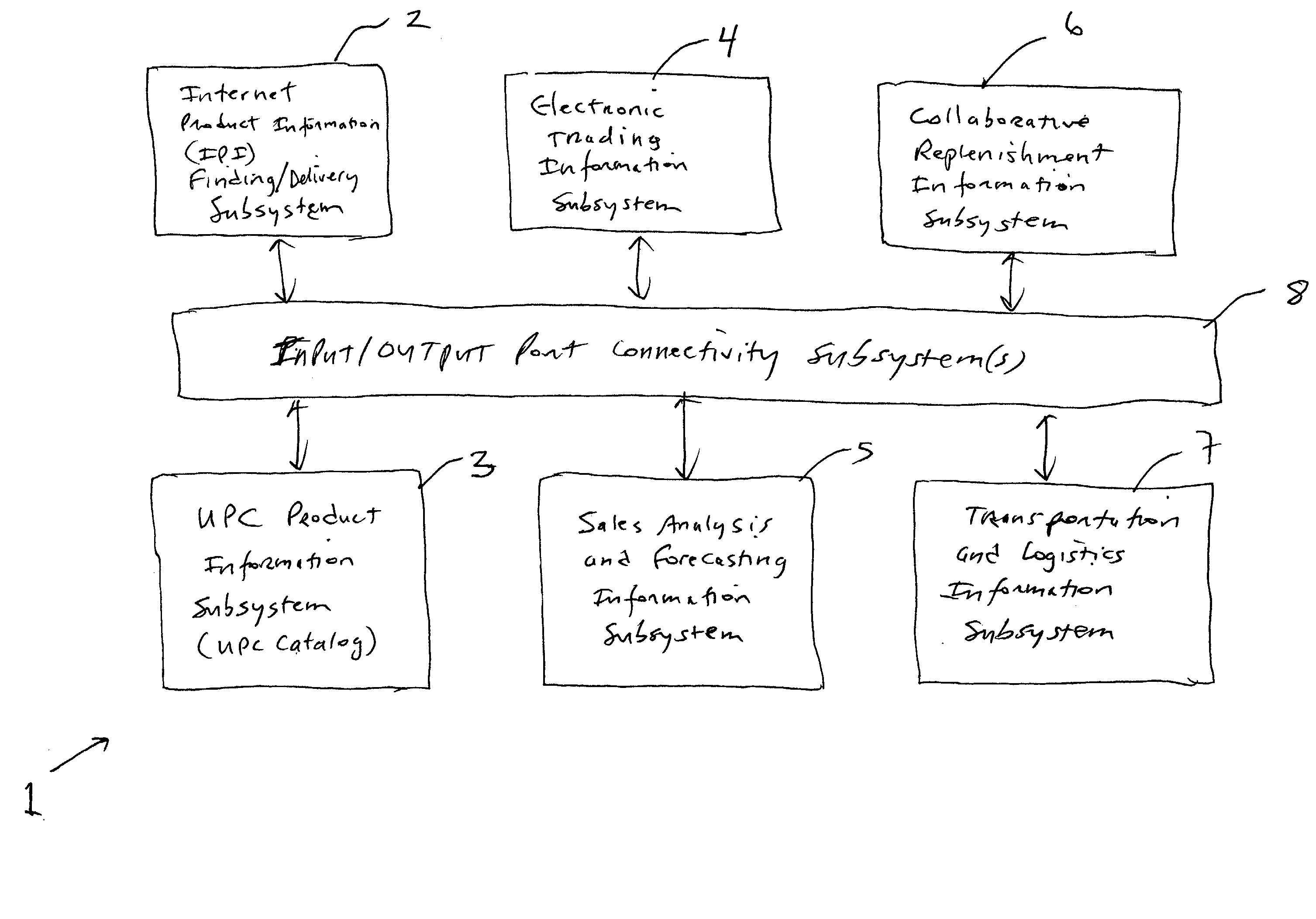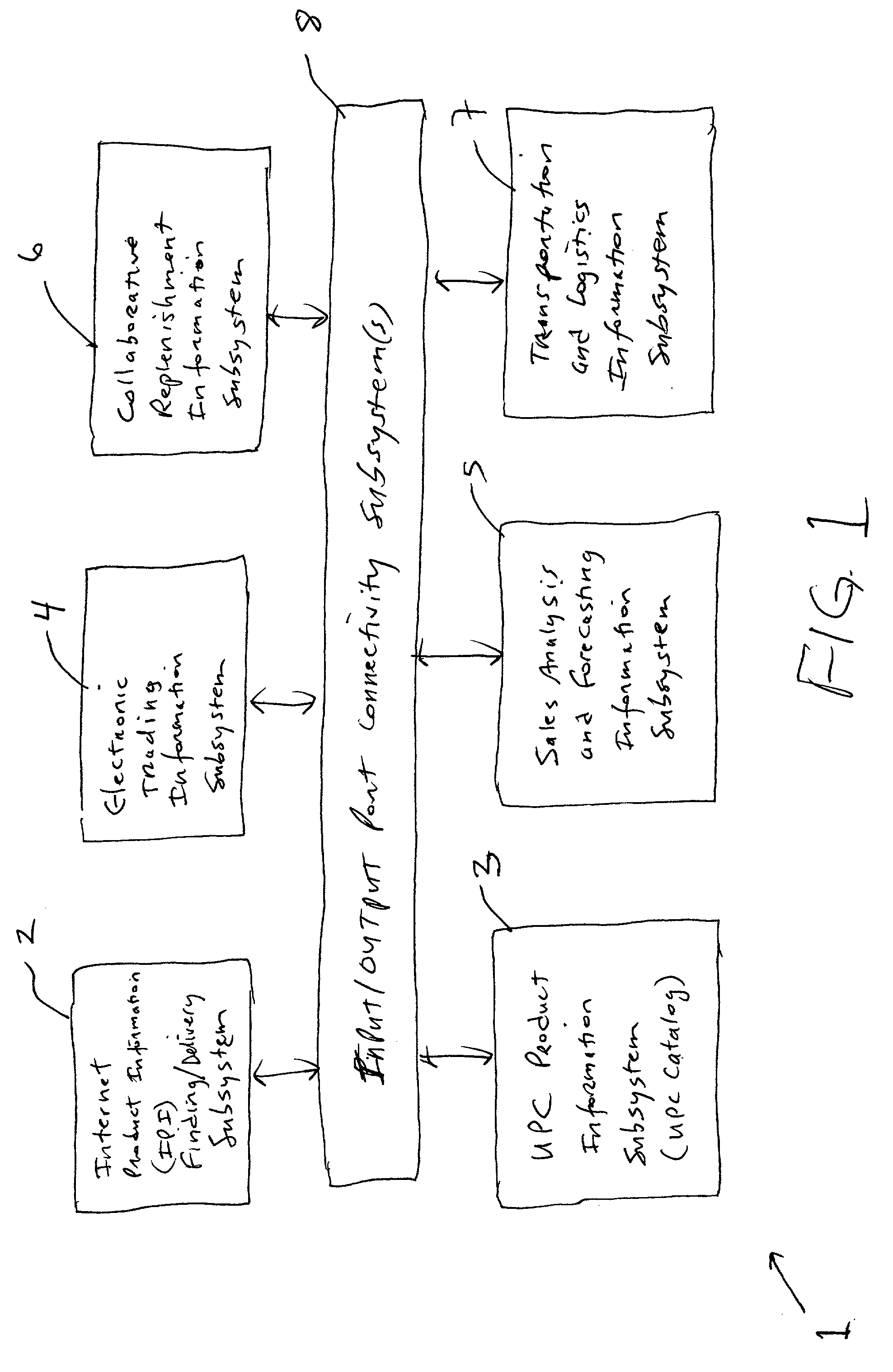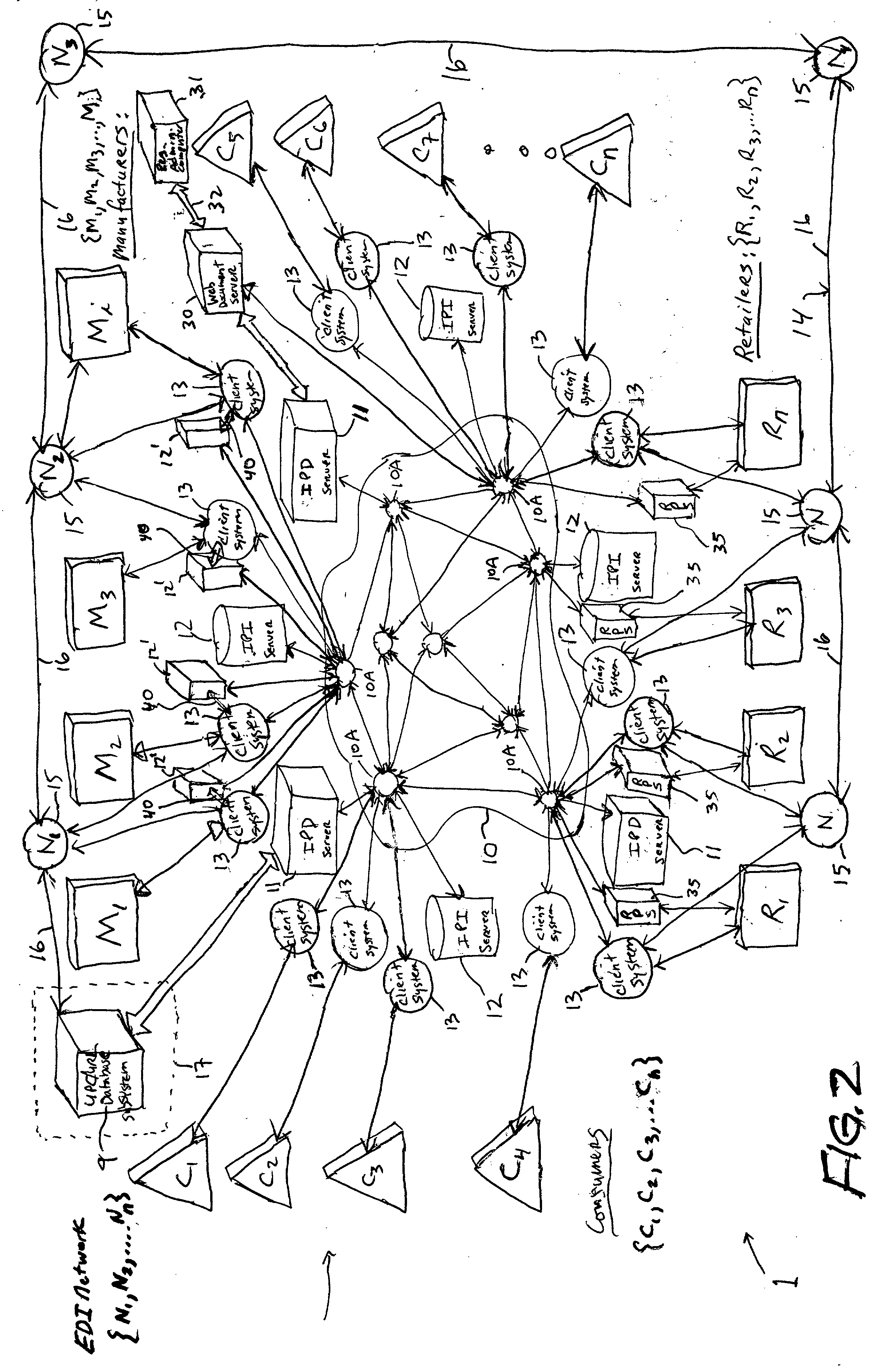System and method for finding and serving consumer product related information to consumers using internet-based information servers and clients
- Summary
- Abstract
- Description
- Claims
- Application Information
AI Technical Summary
Benefits of technology
Problems solved by technology
Method used
Image
Examples
Embodiment Construction
[0088] Referring to the figures shown in the accompanying Drawings, like structures and elements shown throughout the figures thereof shall be indicated with like reference numerals.
Overview Of The System Of The Present Invention
[0089] As illustrated in FIG. 1, the consumer-product information collection, transmission and delivery system of the present invention is generally indicated by reference numeral 1 and comprises an integration of information subsystems, namely: an IPI finding and serving subsystem 2 for allowing consumers to find product related information on the Internet (e.g. WWW) at particular Uniform Resource Locators (URLs), using UPC numbers and / or trademarks and tradenames symbolically-linked or related thereto; a UPC Product-Information Subsystem ("UPC Catalog") 3 for providing retailers with accurate up-to-date product information on numerous consumer-products offered for wholesale to retailers by manufacturers registering there products therewith; a Electronic Tr...
PUM
 Login to View More
Login to View More Abstract
Description
Claims
Application Information
 Login to View More
Login to View More - R&D
- Intellectual Property
- Life Sciences
- Materials
- Tech Scout
- Unparalleled Data Quality
- Higher Quality Content
- 60% Fewer Hallucinations
Browse by: Latest US Patents, China's latest patents, Technical Efficacy Thesaurus, Application Domain, Technology Topic, Popular Technical Reports.
© 2025 PatSnap. All rights reserved.Legal|Privacy policy|Modern Slavery Act Transparency Statement|Sitemap|About US| Contact US: help@patsnap.com



